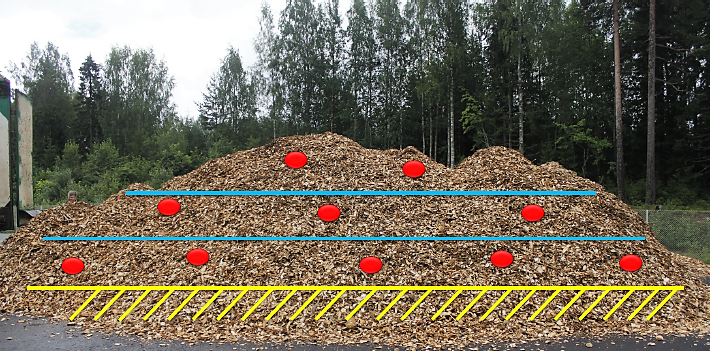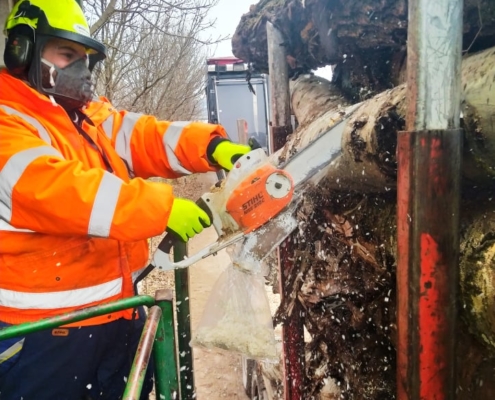The purpose of sampling is to provide a representative sample of the total load of fuel received for further analysis. During the tests, we examine the physical-chemical properties of the sample.
The average samples required for laboratory tests are prepared according to EN 14780.
BULK FUEL
During unloading, the quality of the delivered bulk material is checked. When a foreign non-combustible material different from the specification is found, unloading is stopped.
Sampling is performed in accordance with the guidelines of standards EN 14778 and the more recent EN 18135 on taking samples of solid biofuels.
The lower 30-40 cm yellow hatched part of the unloaded pile is excluded from sampling. The remaining height is divided by imaginary lines into three bands of equal width (approx.: 60-60-60 cm). Taking into account the cross-sectional ratios of the bands so created, 5 individual sampling points are selected at the bottom, 3 in the middle, and 2 at the top, so that the distances between the points in the same band should be nearly identical.
Pile of material after unloading
Division of the material pile – sampling points
ROUNDWOOD FUEL
Sampling may be from the right-hand side of the supplier’s vehicles (basic ad hoc sampling) or from the left-hand side (ad hoc sampling). The methods and tools of sampling are the same in both cases.
A cut perpendicular to the axis line is made in the selected specimen at a distance of at least 10 cm from the end (butt). The sample cut must reach the largest diameter of the sample (heartwood) and the sawdust chip thus obtained is collected and placed in a container used specifically for this purpose.
Particular care is taken to ensure that the collected sample does not contain other contaminants (water, chips of other material, etc.).
In case of road delivery, the number of samples should be 4 pcs per vehicle or 8 pcs on semi-trailers.



